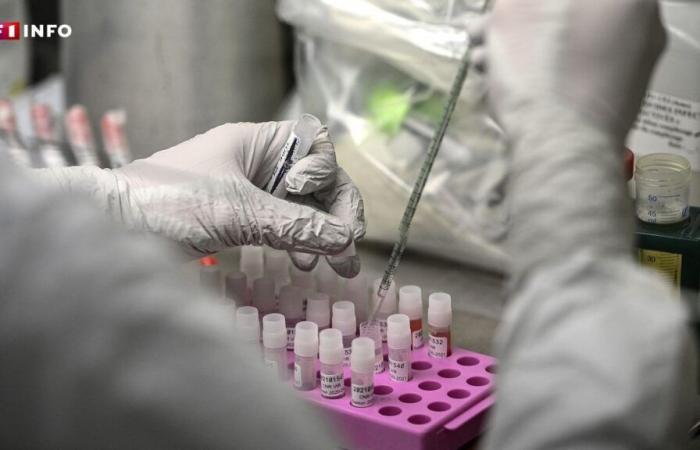In Ukraine, antimicrobial resistance increased with the Russian invasion, according to the WHO representative in kyiv.
In this context, thousands of Ukrainian soldiers returning from the front saw their wounds become infected.
Some hospitals are seeing their workload increase tenfold.
Follow the full coverage
War in Ukraine: a never-ending conflict
A new challenge of war. Since Russia’s invasion of Ukraine in February 2022, explosive drones and artillery fire have fallen on the east of the country, injuring soldiers who are saturating hospitals. But thousands of other soldiers returning from the front saw their wounds become infected by microorganisms resistant to several antibiotics.
According to the WHO, antimicrobial resistance (AMR) is responsible for more than a million deaths each year worldwide, and almost 5 million indirectly. This global phenomenon is accelerated by the massive use of antibiotics to treat humans, animals, as well as food. However, in Ukraine, the problem increased with the Russian invasion, according to the WHO representative in kyiv, Jarno Habicht, for whom the primary cause “is the ongoing war.”
“Dirty, decomposed” wounds
In this context, certain hospitals, such as the Metchnikov hospital in Dnipro, are seeing their workload increase tenfold, notes Serguiï Kossoulnykov, in charge of a surgery department. “Every explosion is an open wound, and every open wound is an infection,” he explains, scrolling through photos of festering lesions on his computer. When wounded soldiers arrive, the wounds are often “dirty, decomposed, with necrotic tissues and bones and full of aggressive micro-organisms that are difficult to combat”, according to this doctor.
Explosive drones in particular, on the front, prevent ambulances from quickly evacuating the wounded, leaving them without treatment for sometimes prolonged periods. Once at the hospital, the teams have no other choice than to inject powerful antibiotics, without waiting for the results of analyzes which would determine the nature of the bacteria for appropriate treatment. “It is impossible to imagine all this without an increase in bacterial resistance,” explains Doctor Kossoulnykov to AFP, because “The more we try to kill a microorganism, the more it defends itself.”
Ever more powerful antibiotics to save lives
This process pushes doctors to use ever more powerful antibiotics to save the lives of impoverished soldiers, clinging only to the hope that a cure will work. But according to Serguii Kosoulnykov, around 50% of wounded soldiers admitted to his service developed resistance to antimicrobials even before starting treatment.
Ukraine is in fact known in the scientific community for its high rates of AMR because antibiotics were, until 2022, accessible without a prescription. The surgeon suggests as another explanation that static trench battles, similar to those of the First World War, could contribute to the increase in antimicrobial resistance. “When we have a concentration of people in one place, that place is going to be very infected,” he said.
-
Read also
Antibiotic resistance: antibiotics soon to be ineffective in fighting bacterial infections?
But for Jarno Habicht of the WHO, the causes of antimicrobial resistance must be the subject of further study. Ukraine has increased the number of laboratories monitoring drug-resistant bacteria, he said, from three in 2017 to 100 currently.
The American Centers for Disease Control and Prevention has noted that “Aggressive bacteria are now spreading across borders” of the country.






